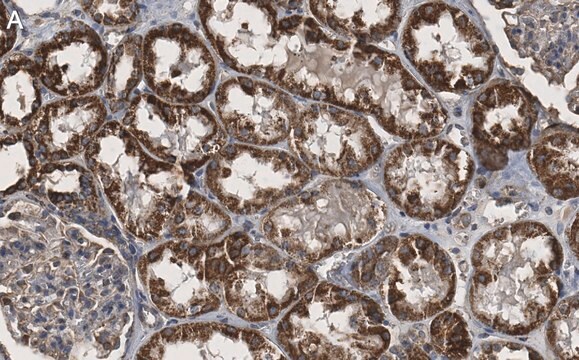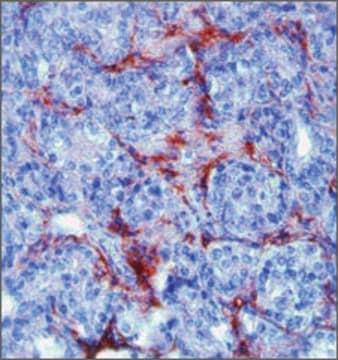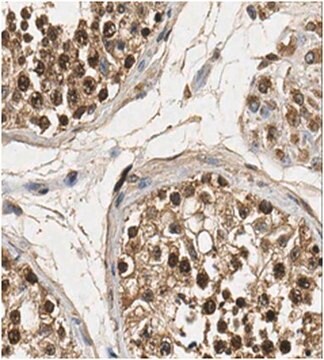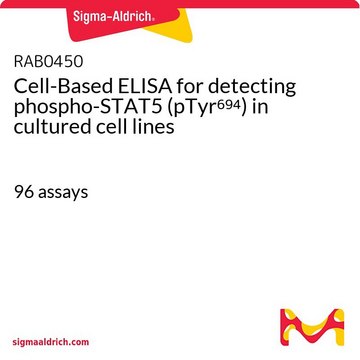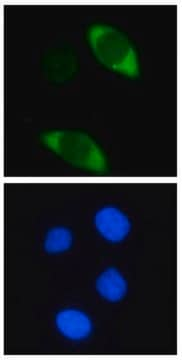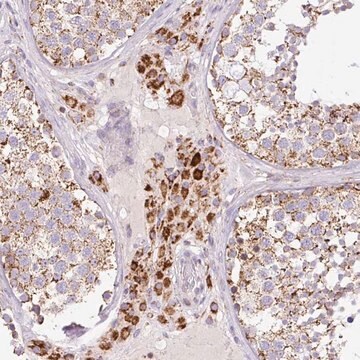詳細
We are committed to bringing you greener alternative products, which adhere to one or more of The 12 Principles of Green Chemistry.This antibody is Preservative-free, produced without the harm or sacrifice of animals and exceptionally stable to allow for ambient shipping and storage if needed and thus aligns with "Waste Prevention", "Designing Safer Chemicals" and "Design for Energy Efficiency".
Click here for more information.
ZooMAb® antibodies represent an entirely new generation of recombinant monoclonal antibodies.Each ZooMAb® antibody is manufactured using our proprietary recombinant expression system, purified to homogeneity, and precisely dispensed to produce robust and highly reproducible lot-to-lot consistency. Only top-performing clones are released for use by researchers. Each antibody is validated for high specificity and affinity across multiple applications, including its most commonly used application. ZooMAb® antibodies are reliably available and ready to ship when you need them.
特異性
Clone 1B12 is a ZooMAb® Rabbit recombinant monoclonal antibody that specifically detects PHD2/EGLN1. It targets an epitope within 19 amino acids from the C-terminal region.
免疫原
KLH-conjugated linear peptide corresponding to 19 amino acids from the C-terminal region of human PHD2/EGLN1.
アプリケーション
Quality Control Testing
Evaluated by Western Blotting in HEK293 cell lysate.
Western Blotting Analysis (WB): A 1:1,000 dilution of this antibody detected PHD2/EGLN1 in HEK293 cell lysate.
Tested applications
Western Blotting Analysis: A 1:1,000 dilution from a representative lot detected PHD2/EGLN1 in lysates from PC3 and C6 cells and Mouse brain tissue.
Affinity Binding Assay: A representative lot of this antibody bound PHD2/EGLN1 peptide with a KD of 6.1 x 10-7 in an affinity binding assay.
Immunohistochemistry (Paraffin) Analysis: A 1:100 dilution from a representative lot detected PHD2/EGLN1 in human kidney tissue sections.
Immunocytochemistry Analysis: A 1:100 dilution from a representative lot detected PHD2/EGLN1 in C6 cells.
Note: Actual optimal working dilutions must be determined by end user as specimens, and experimental conditions may vary with the end user
Evaluated by Western Blotting in HEK293 cell lysate.
Western Blotting Analysis (WB): A 1:1,000 dilution of this antibody detected PHD2/EGLN1 in HEK293 cell lysate.
ターゲットの説明
Egl nine homolog 1 (UniProt: Q9GZT9; also known as EC:1.14.11.29, Hypoxia-inducible factor prolyl hydroxylase 2, HIF-PH2, HIF-prolyl hydroxylase 2, HPH-2, Prolyl hydroxylase domain-containing protein 2, PHD2, SM-20) is encoded by the EGLN1 (also known as C1orf12, PNAS-118, PNAS-137) gene (Gene ID: 54583) in human. PHD2 acts as a cellular oxygen sensor that under normoxic conditions catalyzes the formation of 4-hydroxyproline in hypoxia-inducible factor (HIF ). It is widely expressed with highest levels detected in skeletal muscle and heart and moderate levels are detected in pancreas, brain and kidney. PHD2 is mainly cytoplasmic, but it can shuttle between the nucleus and cytoplasm. It hydroxylates a specific proline found in each of the oxygen-dependent degradation (ODD) domains (N-terminal, NODD, and C-terminal, CODD) of HIF1 and HIF2 . It exhibits a preference for the CODD site for both HIF1 and HIF1β. Hydroxylated HIFs are then targeted for proteasomal degradation via the von Hippel-Lindau ubiquitination complex. Under hypoxic conditions, the hydroxylation reaction is attenuated allowing HIFs to escape degradation resulting in their translocation to the nucleus and heterodimerization with HIF1 β. Defects in EGLN1 gene are reported to cause familial type erythrocytosis, an autosomal dominant disorder that is characterized by increased serum red blood cell mass, elevated serum hemoglobin and hematocrit, and normal serum erythropoietin levels. In the context of glucose starvation, PHD2 is reported to reduce B55 levels that correlates with MDA-MB231 and MCF-7 breast cancer cell death. Knockdown of PHD2 is shown to induce B55 accumulation and prevent apoptosis. This ZooMAbZooMAb® recombinant monoclonal antibody, generated by our propriety technology, offers significantly enhanced specificity, affinity, reproducibility, and stability over conventional monoclonals. (Ref.: Conza;18(12); 2836-2844; Steinhoff, A., et al. (2009). Biochem. Biophys. Res. Commun. 387(4); 705-711; Huang, J., et al. (2002). J. Biol. Chem. 277(42); 39792-39800).
物理的形状
Purified recombinant rabbit monoclonal antibody IgG, lyophilized in PBS, 5% Trehalose, normal appearance a coarse or translucent resin. The PBS/trehalose components in the ZooMAb formulation can have the appearance of a semi-solid (bead like gel) after lyophilization. This is a normal phenomenon. Please follow the recommended reconstitution procedure in the data sheet to dissolve the semi-solid, bead-like, gel-appearing material. The resulting antibody solution is completely stable and functional as proven by full functional testing. Contains no biocide or preservatives, such as azide, or any animal by-products. Larger pack sizes provided as multiples of 25 μL.
保管および安定性
Recommend storage of lyophilized product at 2-8°C; Before reconstitution, micro-centrifuge vials briefly to spin down material to bottom of the vial; Reconstitute each vial by adding 25 μL of filtered lab grade water or PBS; Reconstituted antibodies can be stored at 2-8°C, or -20°C for long term storage. Avoid repeated freeze-thaws.
法的情報
ZooMAb is a registered trademark of Merck KGaA, Darmstadt, Germany
免責事項
Unless otherwise stated in our catalog or other company documentation accompanying the product(s), our products are intended for research use only and are not to be used for any other purpose, which includes but is not limited to, unauthorized commercial uses, in vitro diagnostic uses, ex vivo or in vivo therapeutic uses or any type of consumption or application to humans or animals.

